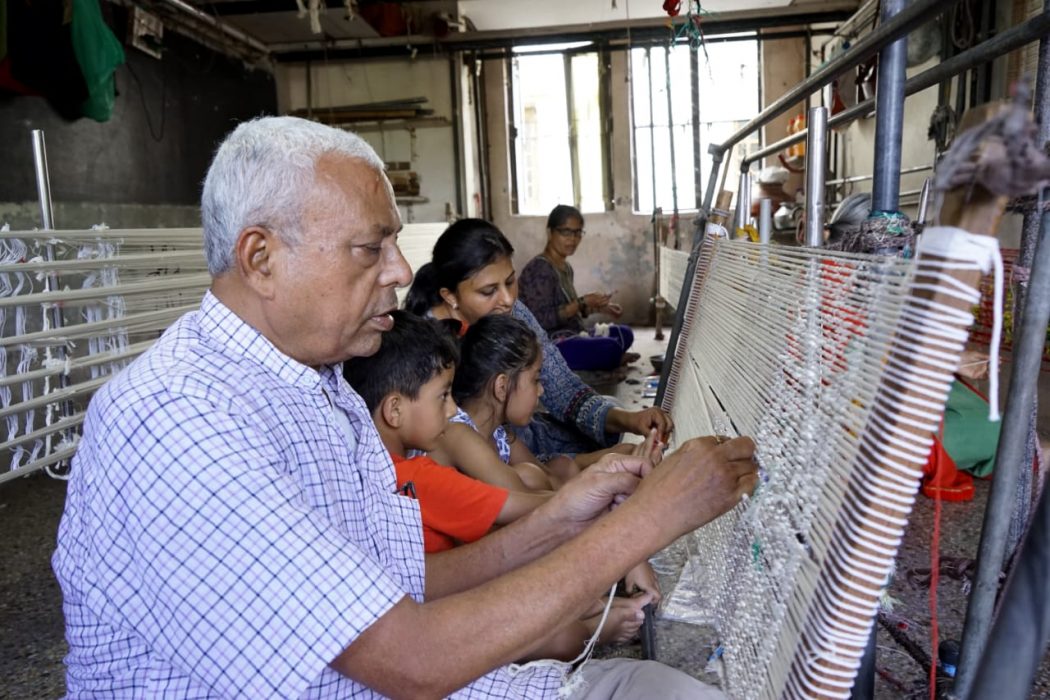
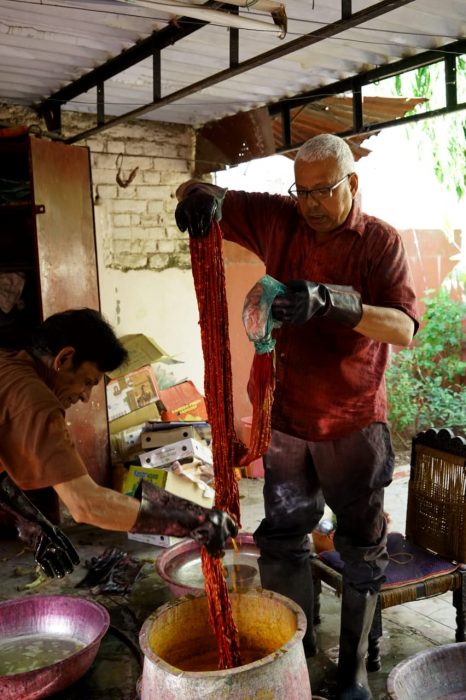
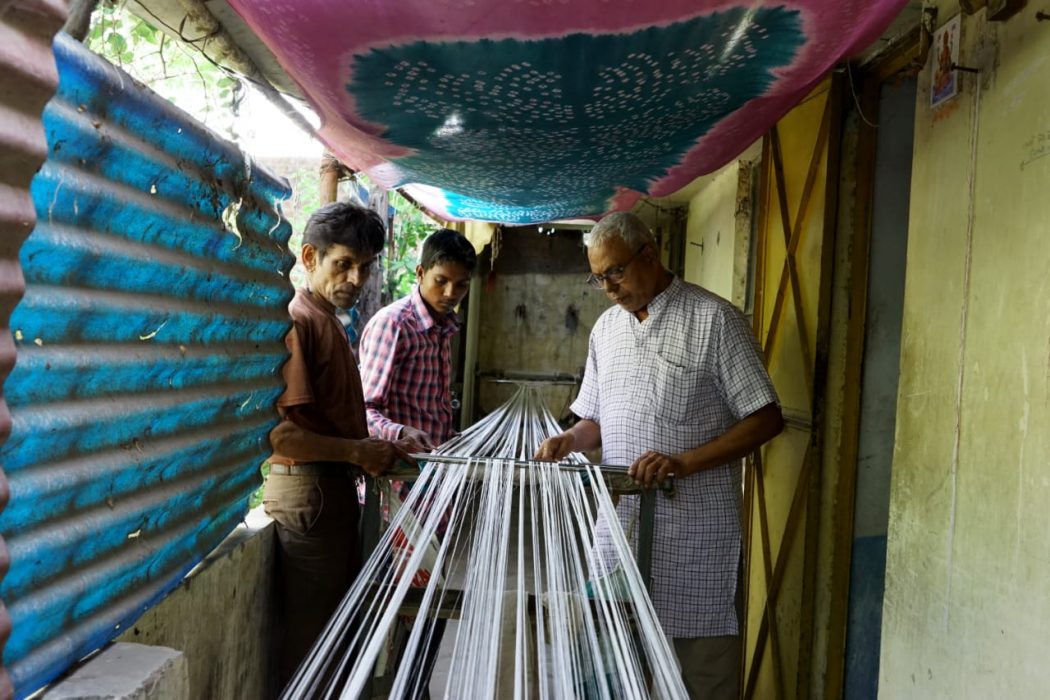
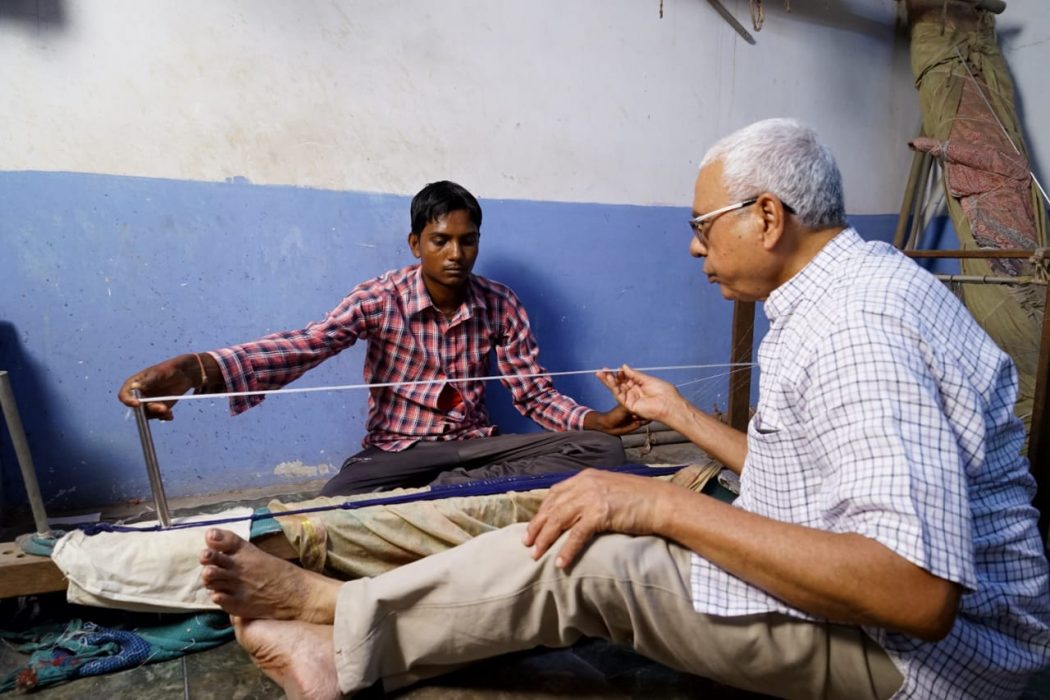
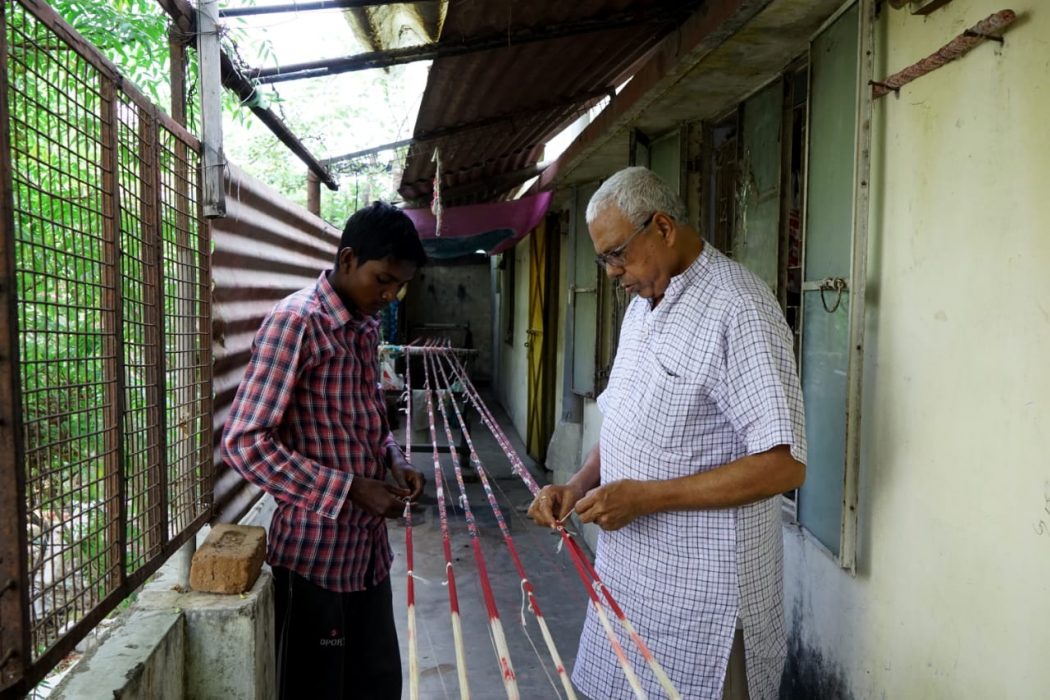
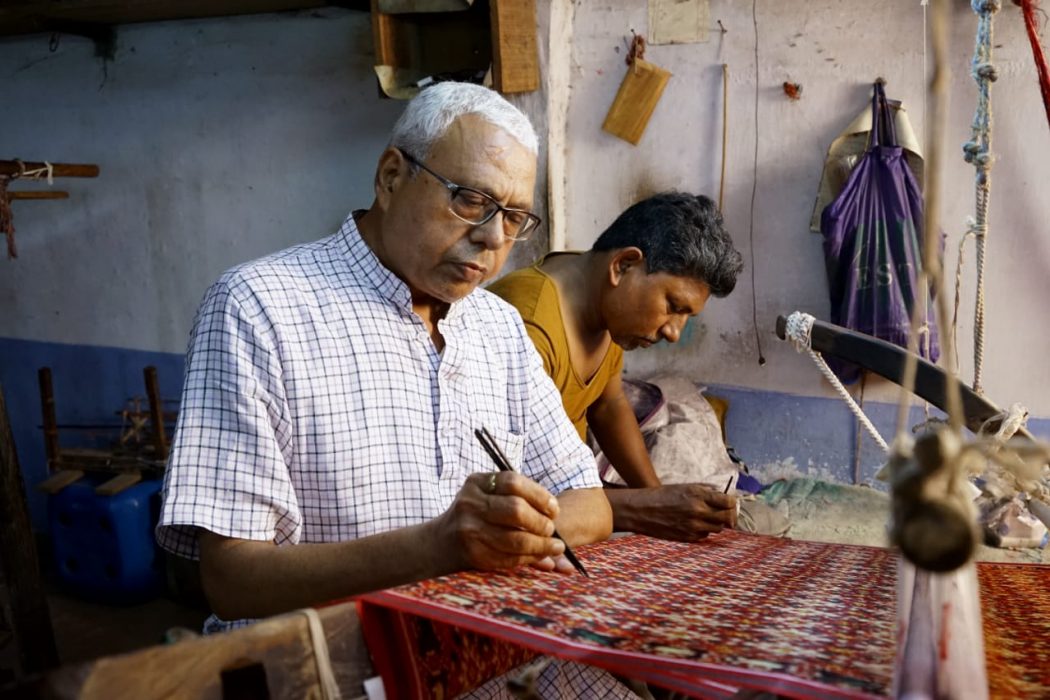
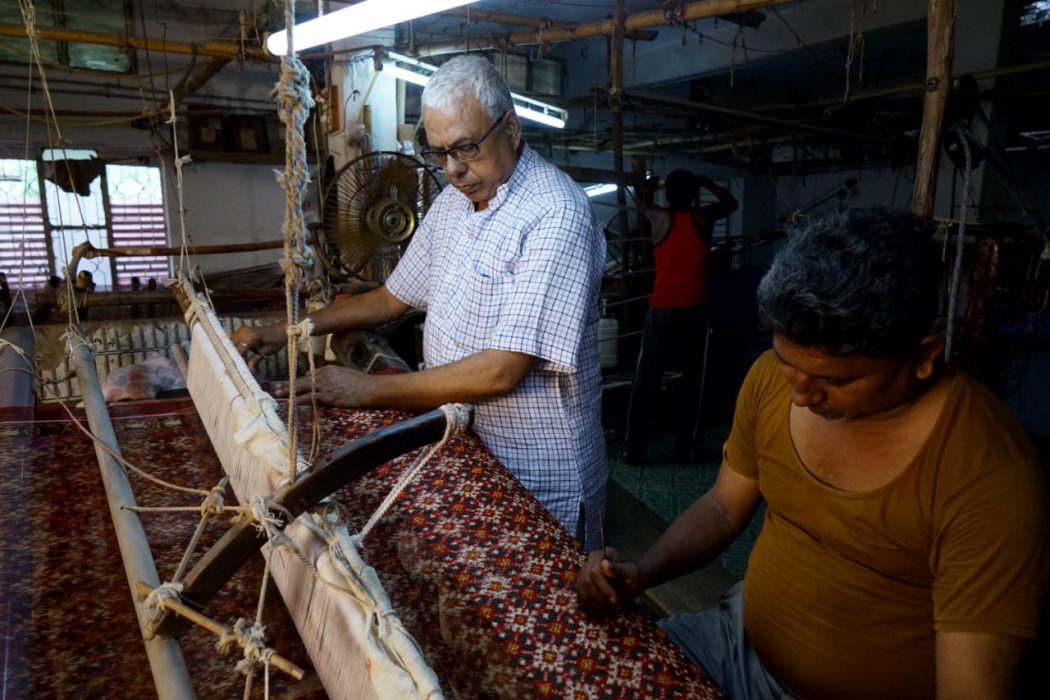
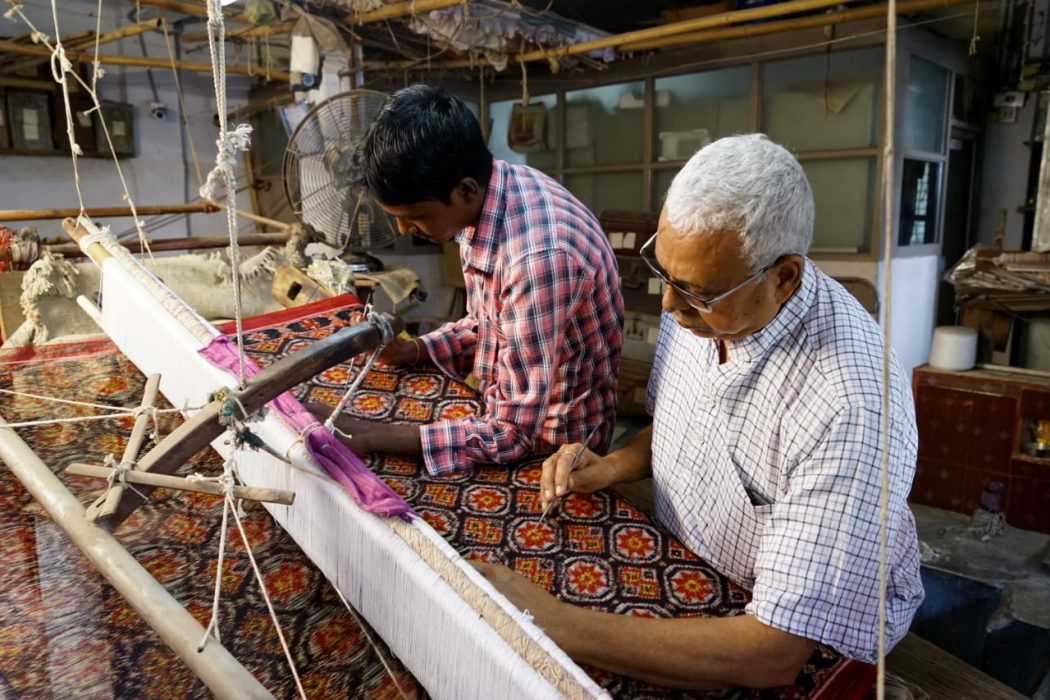
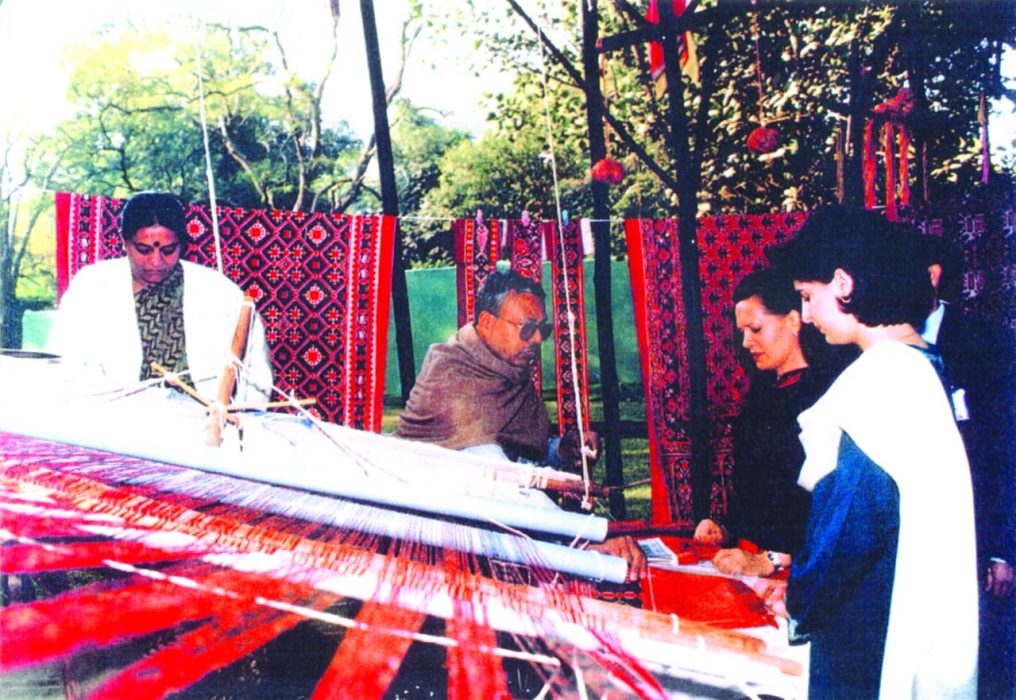
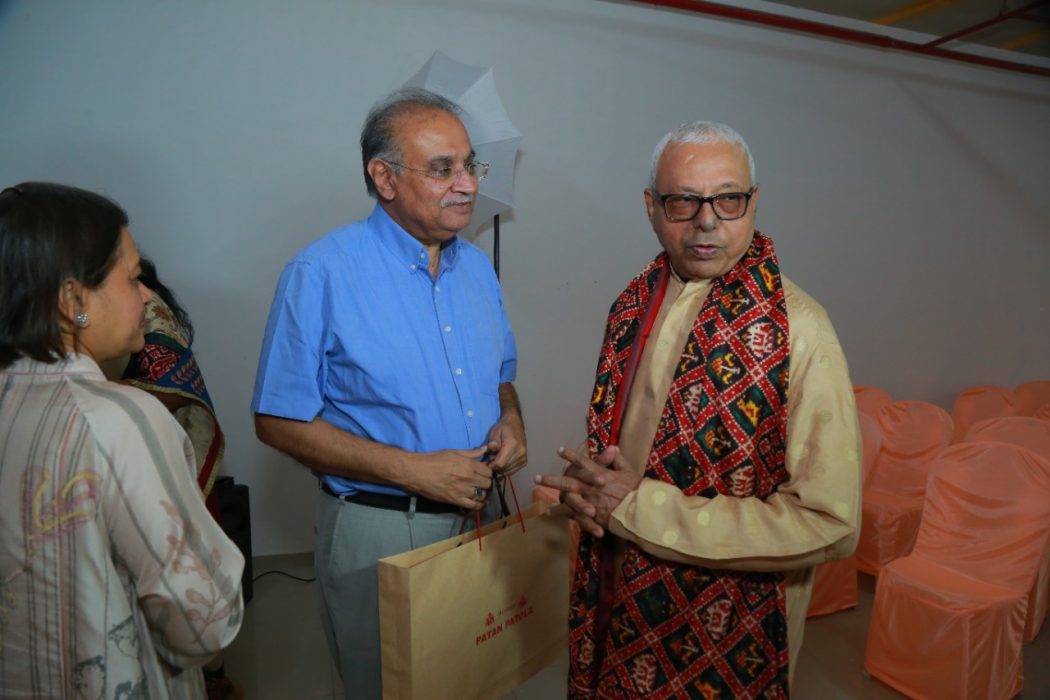
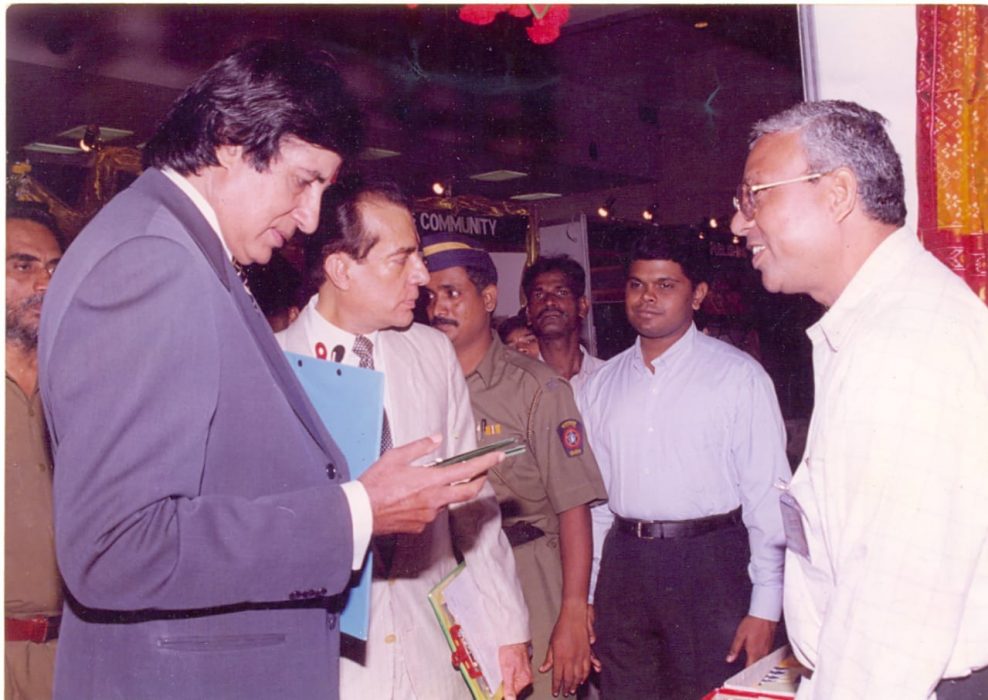
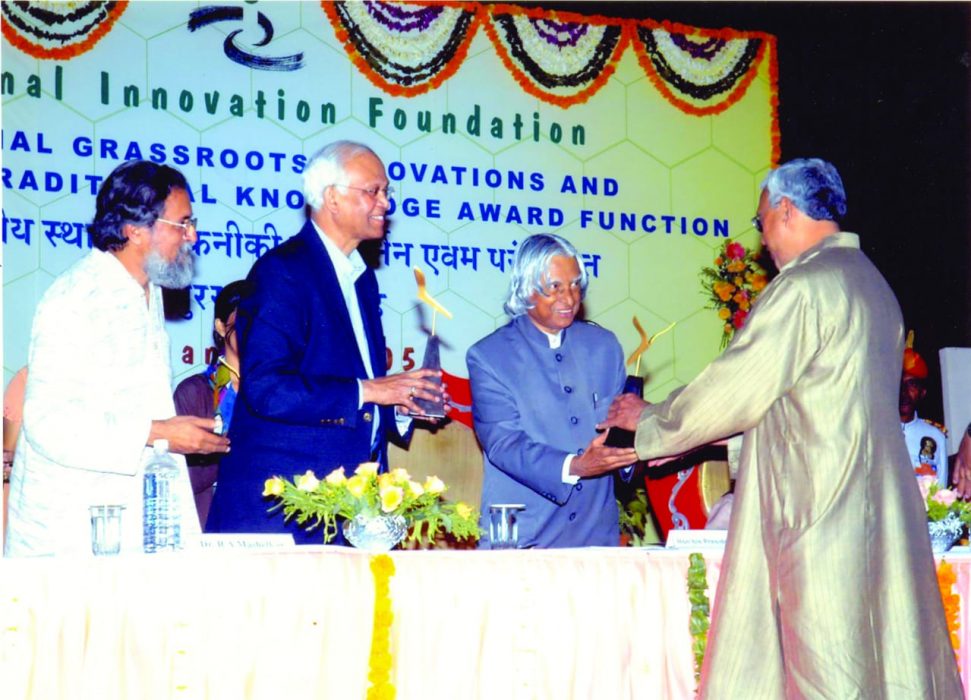
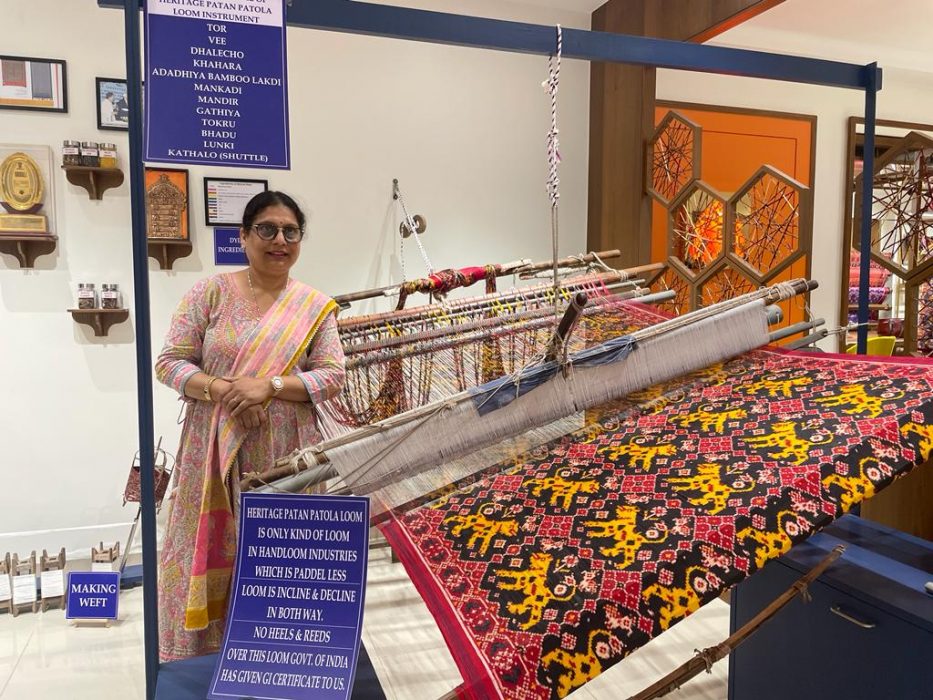
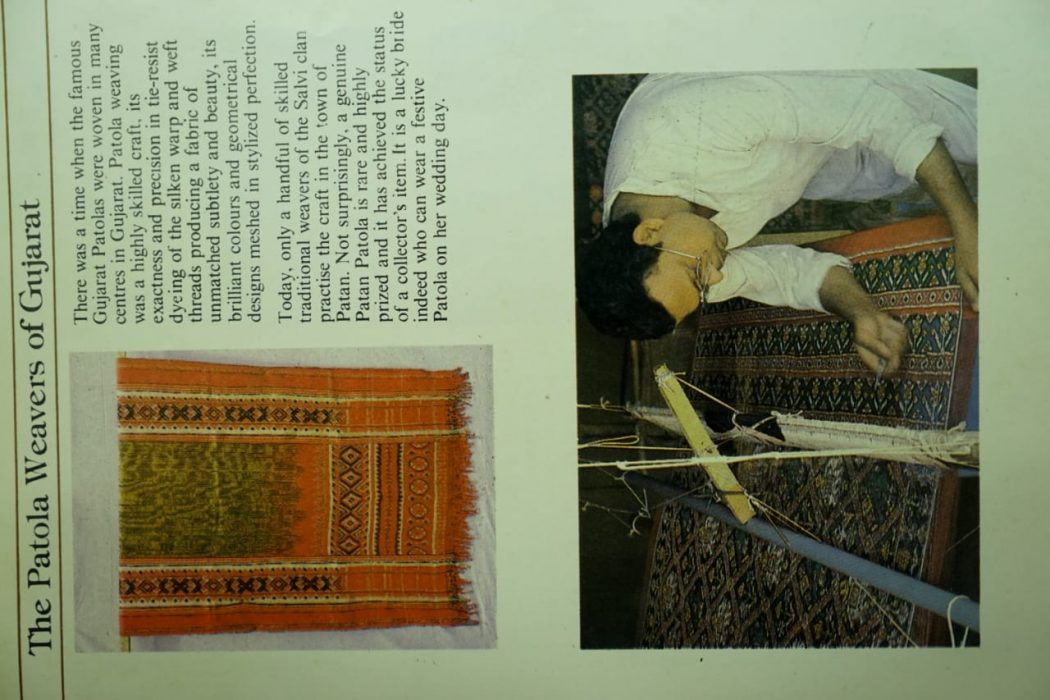
Kanubhai Salvi Profile
Master Weaver Kanubhai Salvi crafts the traditional art of Patan Patola across the globe.
The dying art of Patan Patola is headed out in Gujarat only by four families; out of which the families of Kanubhai Mafatlal Salvi, and his two daughters, Neepa and Hetal, are carrying forward their family tradition and legacy of weaving patola at ‘Heritage of Patan Patola’, a manufacturing unit with full zeal migrated to Baroda about twenty years back and have been practising the craft since then. They claim to have the highest production among the four families and have got the privilege of handling Patola silk not only in India but heading out onto the global stage.
Kanubhai is an engineering degree holder who crafts the centuries-old silk textile Patola, a cultural heritage of India that specialises in creating exceptional outfits, an exquisite handmade silk fabric. Kanubhai’s industry is one of the prime manufacturers and suppliers of Patola sarees, stoles and scarves in the country.
The secret of his craftsmanship lies in manufacturing the Patola, a symbol of opulence as much as posterity and good luck using various colours and motifs design models developed on each yarn are perfectly matched on the dizzyingly mathematical process, and Patola saris are woven using dyed threads both vertically (warp) and horizontally (weft) to create the design. The strings are dyed according to a pattern, and the dye marks align when woven, forming the pattern on the cloth. He craves threads that have distinct knots of cotton thread, as per the design the weaver has composed patola in several varieties like narikunjar, pandada, fulvalibhatt, indigo Tarang, pandada, nanichabb, voharagaji, bandhidesign, green nani chabb, Navratan and more.
Patolas manufactured at Heritage Patan Patola unit by the resist-dyeing process using the warp and weft technique. A sword-shaped stick made out of rosewood is used for adjusting the yarns. The knots help to keep that particular area unexposed while dying. The process of dyeing is repeated – tying, untying, retying and dyeing – several times to dye in different shades and colours and patterns as envisaged by the weaver. Every colour has a unique place in the design; which needs to be carefully aligned while weaving it.
His company ‘Heritage of Patan Patola’ having a history of 600 years is a proud recipient of the UNESCO Seal of Excellence for Handcrafted products in Patolas, and has received the National Award in recognition from former President Shankar Dayal Sharma, Golden Jubilee India Independence Award from Government Of Gujarat as well as the Heritage Award from the 11th Indian President APJ Abdul Kalam.
Over the decades, the highly talented weaver Kanubhel Salvi and his company have been conducting several exhibitions and demonstrating workshops around the globe showcasing traditional Indian crafts to overseas communities. The Salvi family has also established the Patan Patola Heritage Museum, where they conduct live demonstrations of the painstaking weaving process. There are frocks, old family saris and samples of ikat textiles from countries like Thailand, Uzbekistan, the Philippines and Indonesia on the display.
In India, Kanubhai conducted workshops at NID – Ahmedabad, CCIC-New Delhi, IIM-Ahmedabad, Crafts Museum – Village Complex -New Delhi, Surajkund Mela – Haryana, World Crafts Council (WCC-APR), Delhi Crafts Council, International Symposium Bengaluru (Karnataka), Hyderabad, Munnar – Kerala- Kolkatta, West Bengal – Crafts Council
Rotary Club Downtown- Mumbai South etc. He demonstrated workshops and fashion shows in Europe (London), and Singapore. He also marked his presence at several International festivals in Japan, the USA (Hawaii), USSR -Russia and more.
As an art historian, Kanubhai’s oeuvre of work is on the visual arts and he stumbled upon the richness of these weaves through the course of his work. He possesses the intricate craft of double ikat woven sari Patolas usually made from very expensive silk, once worn only by those belonging to royal and aristocratic families. He works with weavers from Patan, Baroda and Rajkot and stocks both single and double ikat patola saris. There are about eight procedures and with the involvement of 6 to 8 people, a Patola takes take six months to one year to make one sari due to the long process of dying each strand separately before weaving them together. The main processes include the conversion of raw silk into pure silk, making warp and weft, tying the knots on warp and weft, dyeing, weaving, and adjusting each thread of warp and weft, followed by the finishing of the fabrics. They are the only family in India that boasts of weaving patolas from completely natural dyes like indigo, turmeric, madder roots, pomegranate skin and marigold flower.
In the cultural context, Kanubhai craftsmanship of making Patolas has an auspicious connection in certain Gujarati communities like Jains, Vohra Muslims, Nagar Brahmin and Kutchi Bhatias. In his designs for Gujarati weddings, the bride or her mother dorns a bright red Patola sari with elephant and parrot designs. His most popular designs include a circle of lotus flowers, buds and leaves known as chabardi which is associated with fertility and is worn for wedding ceremonies in some cultures. In Gujarat, patolas are given to the bride as a part of their trousseau.
Kanubhai’s vision was never about modernizing this age-old art form. It is perfect just the way it is, and he doesn’t intend to mend what’s not broken. Instead, he strives to innovate the patterns in a traditional colour palette.
